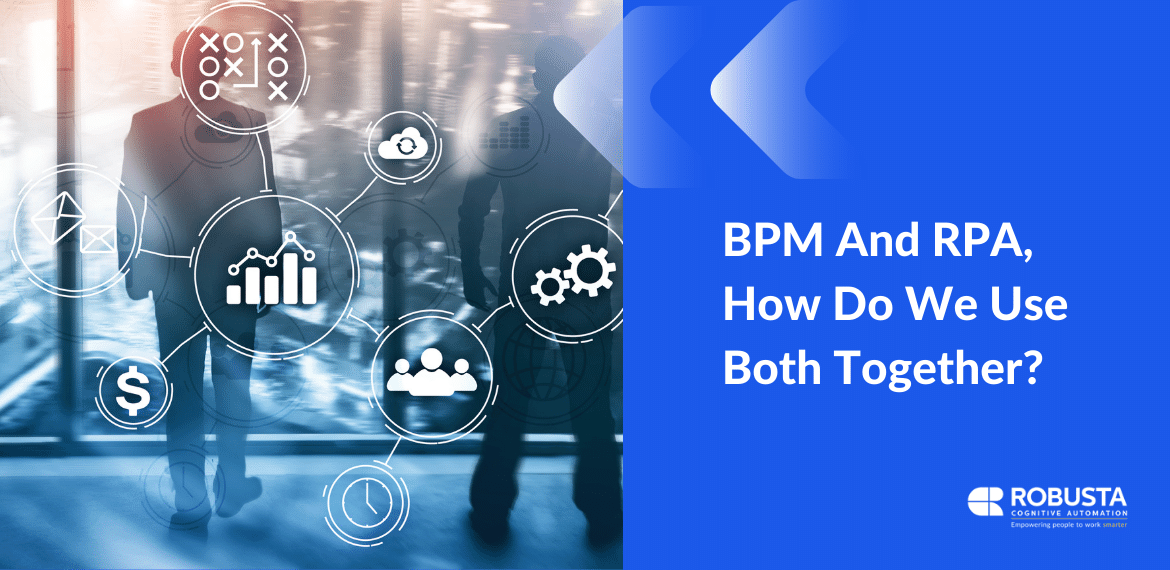
BPM And RPA, How Do We Use Both Together?
BPM And RPA, How Do We Use Both Together?
BPM and RPA play a crucial role in the digital transformation by improving business processes. They serve the same target for businesses, but they are even more powerful when used together.
Well, how?
BPM (Business Process Management) and RPA (Robotic Process Automation) have a complementary relationship for a complete digital transformation. While BPM serves as the universe with its own rules to transact all end-to-end processes, RPA tends to adapt in a given environment to complete a defined task.
In other words, BPM is a comprehensive process defined by you to transform workflows to digital. And RPA is a mission-oriented tool to speed up and automatize routine tasks so that your team can deal with more complicated tasks.
The relationship between BPM and RPA
BPM can be considered a mindset or strategy realized through various tools and allows them to function within itself. However, being more than a tool or simple software, it supports how you want to manage your business processes.
RPA is here to accelerate routine and time-consuming tasks such as data transfer. BPM adopts RPA to provide the infrastructure to perform its duty. RPA aims to complete the task as fast as possible, so it doesn’t bother optimizing the process. You need to define the mission clearly and update it when needed.
Robusta RPA has been developed according to the BPM approach to delivering an end-to-end operations command. It means the tool enables you to visualize and manage the robotic process.
The role of BPMN 2.0 in digital transformation and RPA
BPMN stands for Business Process Model and Notation.
BPMN 2.0 provides the infrastructure needed for designing and tracking the processes. Through a diagram, people in the project can communicate with each other seamlessly to prevent misunderstandings and miscommunication. In addition, a BPMN 2.0 diagram makes even complicated processes simpler to operate, optimize, and simplify. In this way, everybody in the project can see the process step by step.
So, to make it more clear, with the help of BPMN, users can access to;
- The curator and performer of tasks
- The spot of bottleneck in the workflow
- The disposable steps, if any
- The consistency among the team, or vice versa
Accordingly, BPMN supports the RPA project to work seamlessly by eliminating the miscommunication and keeping everything on the radar. BPM serves as a brain to keep things together while RPA is the hands doing the job.
3 reasons why BPM and RPA works perfectly together
BPM and RPA are essential for a company’s digitalization journey. When they are together, they are more powerful. There are solid reasons to use both together.
Increases the efficiency of RPA
RPA is great to add some speed to the workflow; however, it will fail to bring success if the processes are inefficient. In other words, RPA will finish your task quickly, but the output will not make you satisfied.
To increase the efficiency of the processes with RPA, BPM will show you the exact points that require amendment. So, the team will take action before late to make RPA work on the desired output.
Maximizes cost-effective processes
RPA, when used correctly, removes the cost for regular and time-consuming tasks. On the other hand, when it doesn’t work accurately, your investment in the technology will be vain. At this point, BPM comes forward to support the team while managing the processes and avoid a waste of money and time.
Well, time is money. Even if it’s quick, we don’t want to repeat the same task on RPA. With the help of BPM, the process will manage and optimize itself with minimum effort, which makes the process cost-effective.
Grows your business solidly
The talent in your team is crucial to growing your business. Eventually, the companies turn their faces to digital transformation primarily to increase the efficacy among the team. In such a manner, they can allocate the time and energy of the team to the most complicated parts of the workflow.
The equation is quite simple: If your talented employees waste their time on data transfer, they will not be available to find ways to improve your products or services. So under the management of BPM, RPA will complete the tasks while your team puts all the effort into growing the business.
BPM alignment of Robusta RPA
Robusta RPA provides the technological ground to manage your processes as it comes with a native BPM integration. In this way, the RPA works efficiently without extra effort.
As it functions as a web-based studio, the team can access all the processes easily and export them in formats such as PDF and Word to work in harmony with other BPM tools. You can also manage the BPMN by creating and manipulating the diagram with the drag and drop function for an even more straightforward procedure. Furthermore, its low-code structure makes it more accessible.
Thanks to the versioning feature of Robusta, you can see different versions of the processes completed through Robusta RPA. That enables you to switch between versions. In addition, the Rule Engine approach brings transparency, allowing to create, monitor, manage and audit the advanced business rules.
You can contact us to facilitate your regular tasks with automation technologies and learn more about improving your specific processes with BPM and RPA. Prefer Robusta RPA to make the best use of BPM and RPA technologies in your digital transformation. Schedule a demo today.

